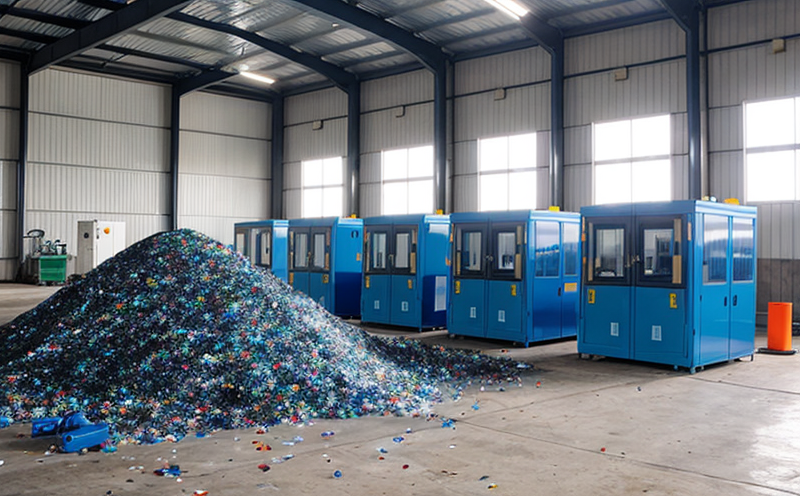ASTM D7849 Color Stability of Recycled Plastics
The ASTM D7849 standard provides a comprehensive framework to evaluate color stability in recycled plastics. This is critical for ensuring that the recycled materials meet quality and performance standards, particularly when they are intended for applications where aesthetic consistency is important.
Color stability testing helps manufacturers and recyclers understand how well the plastic will resist fading or changes in appearance over time, especially under exposure to sunlight, heat, and other environmental factors. This test ensures that recycled plastics maintain their visual appeal and durability, which are essential for consumer satisfaction and market acceptance.
Compliance with ASTM D7849 is particularly important for industries that rely heavily on recycled materials, such as the packaging sector. In these applications, even minor changes in color can significantly impact brand image or product functionality. Therefore, this test plays a crucial role in maintaining brand integrity and ensuring product consistency.
The testing methodology involves exposing samples of recycled plastic to controlled environmental conditions that mimic real-world exposure scenarios. The process typically includes the following steps:
- Sample preparation: Cutting standard-sized specimens from recycled plastic material
- Exposure: Placing the samples in a xenon arc light apparatus designed to simulate sunlight exposure
- Data collection: Monitoring color changes using spectrophotometric instruments over time
The results are analyzed to determine the percentage change in color over predefined periods, which helps quantify the plastic's resistance to fading. This information is invaluable for quality control and process optimization in recycling operations.
ASTM D7849 also highlights the importance of proper sample preparation. The standard specifies that specimens should be cut from recycled plastic materials in a manner that reflects real-world applications, ensuring that test results are relevant to actual product performance.
In summary, ASTM D7849 provides a robust framework for evaluating color stability, which is essential for maintaining the quality and appearance of recycled plastics. This standard ensures that products made from recycled materials meet high-quality standards, thereby fostering sustainable practices in the industry.
Applied Standards
The ASTM D7849 standard is widely recognized for its rigorous approach to color stability testing of recycled plastics. It specifies detailed procedures and acceptance criteria that are essential for ensuring accurate and reproducible test results.
The standard references several other relevant standards, including:
- ASTM D4253: Standard Practice for Evaluating Color Stability of Plastics
- ISO 105-B08: Photostability - Part B08: Determination of the lightfastness of textiles and other fibrous materials by means of xenon arc lamps
The ASTM D7849 protocol aligns with these standards to provide a consistent and reliable method for evaluating color stability. This alignment ensures that test results are comparable across different laboratories, which is crucial for industry-wide quality assurance.
Scope and Methodology
The scope of ASTM D7849 encompasses the evaluation of color stability in recycled plastics under simulated sunlight exposure. This test is particularly useful for assessing the durability of plastic materials that are intended for outdoor use, such as packaging or construction applications.
According to ASTM D7849, the method involves exposing samples of recycled plastic to a xenon arc light source, which simulates solar radiation. The exposure time and conditions can be adjusted based on specific application requirements. For example, short-term exposure may suffice for indoor packaging, while longer exposures are necessary for outdoor applications like signage or garden furniture.
The test samples are typically prepared as small discs or plaques of recycled plastic material. These specimens are then placed in a controlled environment where they can be exposed to the xenon arc light source. The exposure time is carefully monitored, and data on color changes are recorded at regular intervals.
The acceptance criteria for ASTM D7849 specify that the percentage change in color should not exceed certain limits over a specified period of exposure. These limits are determined based on the expected service life of the plastic material in its intended application. For instance, materials used in outdoor signage may require more stringent color stability standards than those used indoors.
Use Cases and Application Examples
- Packaging Industry: Recycled plastics are increasingly being used in packaging to reduce waste. ASTM D7849 helps ensure that these materials maintain their color integrity, which is crucial for brand identity.
- Construction Sector: Outdoor structures often use recycled plastic components. The test ensures that these materials remain visually appealing and functional under prolonged exposure to sunlight.
- Mobility Industry: Recycled plastics are used in automotive interiors, where color stability is important for aesthetic consistency and customer satisfaction.
- Consumer Goods: Products like outdoor furniture or garden decor benefit from ASTM D7849 testing to ensure that recycled plastic components do not fade over time.





